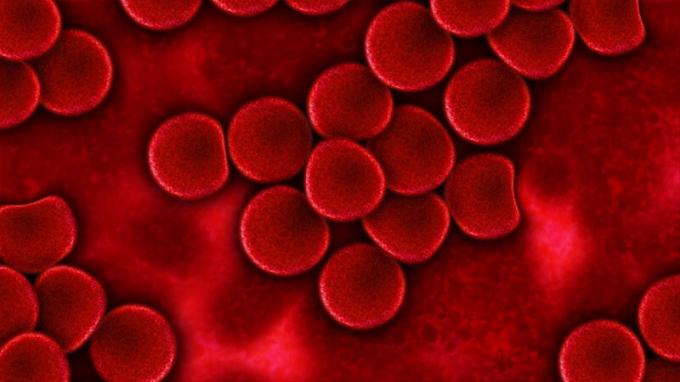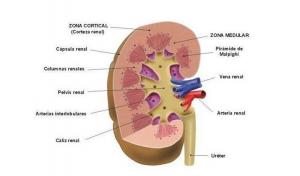Luteinizing hormone: characteristics, effects and functions in the body
The pituitary gland is responsible for producing luteinizing hormone, also known as LH. In women, LH is responsible for progesterone production, follicle maturation, and ovulation. It is an essential hormone for female fertility. In men, it is also related to reproductive capacity, LH directly affects sperm production, by acting on the testicles.
LH is commonly used in ovulation tests for people trying to get pregnant. Also, LH levels in the blood can indicate underlying problems associated with various reproductive health issues. LH is used in the diagnosis of gynecological disorders, along with pituitary tumors and ovarian problems, such as cysts. The concentration of LH in the blood can be used to check gynecological health, along with FSH and gonadotropin-releasing hormone, or GnRH. In this article we will explain in detail the functions of luteinizing hormone and what underlying pathologies may indicate altered levels of it.
- Related article: "Endocrine system: anatomy, parts and functions"
What is luteinizing hormone?
The pituitary gland (hypophysis) is a small, pea-sized gland located at the back of the brain. It is also known as the "master gland" of the body, since it regulates different activities of other endocrine glands and is responsible for the production of different hormones.
The pituitary gland secretes luteinizing hormone, also known as LH or lutropin., which is an important hormone for menstruating people in the development of the menstrual cycle. LH is present throughout the life of menstruating people and is essential for the proper functioning of the menstrual cycle, its concentration changes according to the part of the cycle in which it is, allowing the different stages. During ovulation, luteinizing hormone concentrations are higher than in other phases.
In males, luteinizing hormone stimulates testosterone production. Testosterone is a sex hormone needed for sperm production, so the level in the testicles, where sperm are produced, is higher than the level in the blood.
- You may be interested: "Types of hormones and their functions in the human body"
How does luteinizing hormone act in the body?
Lutropin is a hormone that mainly affects the reproductive system, so it will act differently in individuals of different sexes. In the case of females, the hormone is closely related to menstruation, in males it has an essential role in the production of testosterone.
1. Functions of LH in females
Luteinizing hormone together with follicle-stimulating hormone (FSH), another gonadotropin produced in the pituitary gland, controls the different phases of the period. The follicles -which contain the ovules in the ovaries- respond to the production of FSH, which also stimulates the production of estrogens within them.
Estrogens have a role in the production of LH and the decrease of FSH. The increase in estrogen levels causes the pituitary gland to stop producing FSH and start producing more LH. high levels of LH allow release of the ovum from the ovary. In the now empty follicle, cell proliferation begins and becomes a corpus luteum. The main role of the corpus luteum is the production of progesterone for the establishment and maintenance of pregnancy. If there is no fertilization, progesterone levels drop and the cycle starts all over again.
- Related article: "The 10 hormones of pregnancy (and their functions)"
2. Functions of LH in males
In males, luteinizing hormone, se attaches to cells in the testicles called Leydig cells. This hormone causes the release of testosterone, a sex hormone that helps maintain the male secondary sexual characteristics such as muscle mass and necessary for the production of sperm. Testosterone levels affect overall male health.
3. Other functions of LH
Steroid hormones, such as progesterone and testosterone, are synthesized from cholesterol. The first precursor of sex hormones is pregnenolone. LH helps cholesterol enter the mitochondria, where it is converted to pregnenolone.
LH contributes to increased concentrations of enzymes, protagonists of the set of metabolic reactions that allow the synthesis of steroid hormones. LH stimulates in particular the manufacture of androgens, by increasing the expression of their genes.
- You may be interested: ""The 10 branches of Biology: its objectives and characteristics"
What is a luteinizing hormone blood test?
As we have already indicated earlier in the article, the levels of LH hormone present in the bloodstream of a menstruating person change throughout the menstrual cycle. In addition, the different levels of LH that occur in the menstrual cycle are not constant over time, they are globally lower as one ages. LH levels, like those of other sex hormones, are also altered during pregnancy.
An LH blood test measures the amount of hormone in the bloodstream. A person may need to have several LH tests if they are undergoing a fertility study, to monitor levels of the hormone at different phases of the cycle. LH can also be measured with a urine sample.

In the case of males. LH levels can be measured, either naturally and compared to a baseline value and/or after injecting gonadotropin-releasing hormone. Levels are measured after gonadotropin injection to check for a problem with the pituitary gland or another part of the body.
- Related article: "Circulatory system: what it is, parts and characteristics"
What is the luteinizing hormone test for?
There are many reasons why an LH measurement may be requested. Altered LH levels are frequently related to menstrual problems, fertility problems and the onset of puberty. Below we explore the various common uses of LH tests:
1. fertility problems
A measurement of LH blood levels may be ordered if there are difficulty conceiving. Doctors use LH tests to measure reproductive capacity and fertility problems, which occur in both females and males.
There are different conditions related to LH that can affect reproductive capacity and the possibility of pregnancy. Frequently, abnormal levels indicate that there may be a problem with the number of sperm or the supply of eggs from the ovaries.
Testing a person's LH blood allows the doctor to determine if the problem is in the sperm count or in the egg supply. Either of these two conditions can make it difficult to conceive.
2. Ovulation
During the menstrual cycle, there are approximately 6 days in which a person can get pregnant. The best time to try to conceive is around the time of ovulation. On different days, people trying to get pregnant can measure their LH levels to find out how fertile they are. As we have seen, LH levels rise before ovulation to allow release from the ovary. This is the most fertile time in the cycle, as the released ovary can be fertilized. Urine tests can be used to identify the fertile time of the cycle. The tests detect the LH surge that occurs approximately 1-1.5 days before ovulation.
The ovulation kits that are sold in pharmacies usually contain several urine tests. The best time to use them is around the 13th, 14th or 15th day when the middle of the menstrual cycle occurs, if you have regular 28-day periods. This helps determine when you are about to ovulate.
- You may be interested: "Why the menstrual cycle can affect sleep"
3. menstrual changes
High LH levels in people over the age of 50 may indicate the onset of menopause. LH tests can help diagnose menstrual changes or problems that occur early.
4. precocious or delayed puberty
Changes at puberty include the growth of pubic hair in both sexes, the development of the testicles, and the development of the penis in males. male and breast growth and the onset of menstruation in females, these changes are related to higher levels of LH.
High LH levels are associated with early puberty. In contrast, low LH levels are associated with late puberty. Therefore, LH tests can help the doctor determine if there is an early or late onset of puberty and prescribe some type of treatment if necessary.
5. Pituitary gland problems
LH is produced in the pituitary gland, if this is affected the levels of LH can be altered. An LH level test can help determine if there is a problem with the pituitary gland, such as a pituitary tumor.
6. low testosterone levels
LH contributes to the production of testosterone. Low testosterone levels are associated with the appearance of different symptoms, such as:
- decreased libido
- erectile dysfunction problems
- Decreased facial hair growth
- low energy levels
- mood disturbance
- loss of muscle mass
- Weight gain


